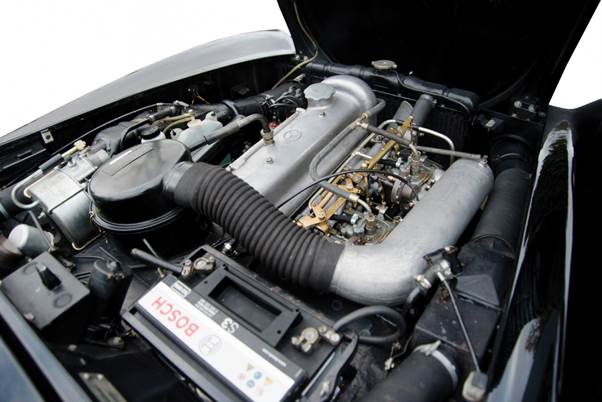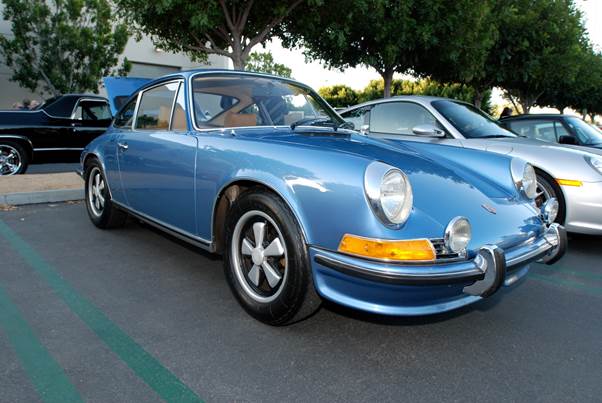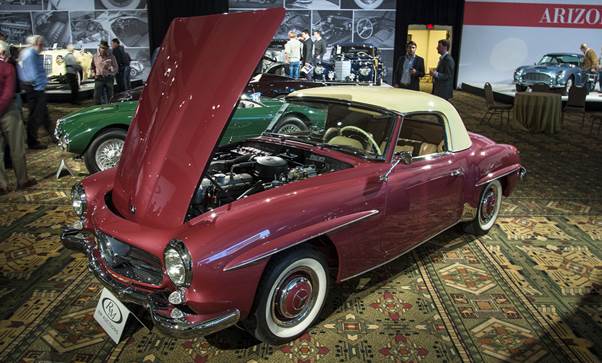Ravaged by the elements, this 190sl was saved promptly
embarked on a mission to restore it
Likewise the upper seam of the inner wheel
arch is all but gone, with perhaps only 20 per cent of the metal remaining. A
view forward into the engine bay shows the front panel that sits forward of the
bonnet and links the two wings. It appears solid at first glance, but the boxed
section below which provides the structure’s strength has all but disappeared,
while the lower front area of the offside wing is irrefutably a distant memory.
Given all these problems, the restoration
at Redcastle Classics took around 14 months. “The work Brian and Simon have
done is truly amazing,” enthuses Adrian. During the build, the team at
Redcastle Classics, in consultation with Adrian, sought to improve upon the
original specification to create a car more suited to today’s motoring needs.
The rebuilt engine benefits from a camshaft from a slightly later car, which
offers a smoother power delivery, while a new 1.37 ratio rear differential has
replaced the car’s original 1.39 unit, bringing lower revs for any given speed,
thereby reducing not only fuel consumption, but also engine stress and noise
when cruising.
The gearbox fitted now is somewhat different
to the original unit too, modified internally during its rebuild, as Adrian
explains. “I think the first 1,250 190SLs had a more sporting gearbox in terms
of the ratios used, but Mercedes later modified the transmission to make it
more suitable for touring.
In reality though, this meant that when
you’re in top gear, on a motorway for example, that little four-cylinder engine
is working quite hard, and frequent gear changes are required at lower speeds.

In
reality though, this meant that when you’re in top gear, on a motorway for
example, that little four-cylinder engine is working quite hard, and frequent
gear changes are required at lower speeds.
“I tried unsuccessfully to source one of
early gearboxes, but then I discovered that SLS [a specialists based in
Barsbiittel in Germany that deals with the 190SL as well as other older
Mercedes] had two countershaft gears available from the early gearbox. I
snapped up those and then took them, along with my car's gearbox, to Neve
Engineering in East Sussex, which manufactured a set of main shaft gears to
match them. The new gearing provides much more flexibility and makes for a more
comfortable and relaxing drive.”
Modern minded
To ensure a stress free car, Adrian has
opted for a number of other smaller changes, including swapping the original
dynamo for an alternator, while a 123ignition distributor, with adjustable
advance curves, ensures a strong, well timed spark time after time, and
eliminates the breakdown risks associated with bad point gapping, and pitted
faces.
One of the more obvious modifications for
comfort, though very few people give them a second glace, are the headrests,
which were never available on the 190. “I was a little worried what they would
look like,” says Adrian, “but I think they look like they could have been there
from the beginning.”
For me, however, what makes this car truly
stand out is its colour, which almost shimmers under the late afternoon sun.
“It’s Blue metallic, which has the paint code DB387,” reveals Adrian. “As I
understand it, it was a special option for the 300SE and longer wheelbase
Pintails. Though it was never actually offered on the 190SL, it is a period
colour.

It’s
Blue metallic, which has the paint code DB387,” reveals Adrian. “As I
understand it, it was a special option for the 300SE and longer wheelbase
Pintails.
I did toy with the idea of painting the car
Strawberry metallic, which was an original, special colour option, but while
that might look good in California, it doesn’t seem right for South London!
Many people think of the 190SL as a lady’s
car anyway, so if I turned up in a strawberry coloured one I'm not sure what
the reaction would be!” Before we part, I ask Adrian if he is pleased with
Redcastle Classic’s work. “Certainly,” he replies. “I can’t bear to think of
these lovely cars being scrapped. As anyone undertaking this type of
restoration knows, it is very likely to be an expensive exercise bur, in the
end, to preserve something like this is well worth all the time and effort.”
Having spent a couple of hours in the company of the car, and witnessed the
high praise offered by every single person that walked past our photo-shoot, I
agree entirely.

Many
people think of the 190SL as a lady’s car anyway, so if I turned up in a
strawberry coloured one I'm not sure what the reaction would be!”